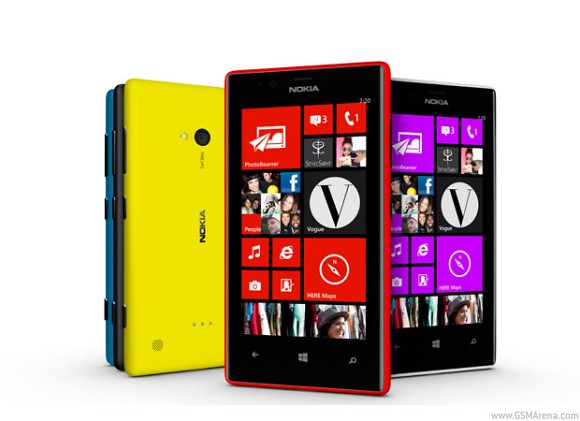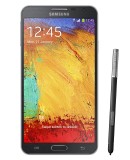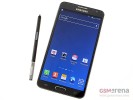We are currently putting the UK version of the Motorola Moto X through its paces, and we will be updating this review with our findings very soon.
The Moto X is the first handset to come out of the collaboration between Motorola and Google, although here in the UK we were treated to the quite excellent Moto Gbefore the X made it to our shores.
Google became Motorola's owner and parent company over a year ago now, which had many thinking that Moto would make the next Nexus phone. Instead we got the Moto X, a compact, stylish handset with decidedly mid-range specs.
With an emphasis on battery life, contextual services and easy one-handed operation, it seems Motorola has theiPhone 5C (and to some extent the iPhone 5S) in its sights, not the big screen powerhouses like the HTC One or Samsung Galaxy S4.
The Moto X is available on all the major networks, and can be picked up for free on two year contracts from £21 per month. If you fancy owning your Moto X outright you can lay down £389.95 for the handset.
That puts the Moto X on par with the likes of the HTC One Mini andSamsung Galaxy S4 Mini.
The Motorola Moto X has a dual-core processor and 720p screen, lower than the quad-core and 1080p combo that the HTC One and Galaxy S4 have taught consumers to expect from flagships.
While it looks lesser on paper, will it really make a difference day to day? Motorola is betting on no. Instead of going for all the gigahertz, it's loaded the Moto X up with thoughtful features like hands-free Google Now voice commands, a clever notification system and camera access with the flick of wrist.
It's also claiming twenty-four hour battery life on a 2200mAh cell, thanks to those lower wattage internals.
Can services trump specs? Has Motorola built the best Android phone for the "everyman" user? Or will it be lost in a sea of bigger screen phones with bigger specs and bigger names? Only time will tell.
At 5 inches, the Moto X is diminutive compared to the current Android leaders. This is good news for anyone who's felt like the HTC One or Galaxy S4 were going to rip out of their pocket, or slip out of their hand. The X is also built from a polycarbonate plastic that gives it a different feel from other phones on the market.
Its materials make it feel dense and well built; it actually feels a little bit ceramic. It's a marked contrast to the Galaxy S4, which feels plastic and hollow - the Moto X feels solid and well balanced. Weighing in at 130g it's on the heavy side, but the weight isn't too much, and gives the phone a substantial, premium feel.
The rear of the phone is curved slightly, letting it nestle easily in your hand. My review unit was a white model, with a slightly holographic woven pattern. The Motorola logo on the rear is dimpled, giving your index finger a perfect place to rest.
Like an iPhone 5C or HTC One, the back is a little bit slippery, the only thing that detracts from a build otherwise perfect for one-handed use.
The Moto X's full measurements are 129.3 x 65.3 x 10.4mm. It's easy to operate in one hand, due to its moderate size as well as a power button and volume rocker on the right side, right where your thumb can get at them.
Those are the only physical buttons on the phone. They're metal and raised and therefore easy to press, but do feel a little bit loose in their sockets. Shake the phone and you can faintly hear them rattle; this is something I encountered on the last Motorola phones I reviewed, the Razr i and Razr HD, a slight annoyance that detracts from the otherwise excellent feel of the phone.
The Moto X has a sealed design, with no microSD expansion. That's a bit of a bummer, since you'll be shelling out £390 for the 16GB option (and even more for 32GB), with no 64GB model available. It has allowed Motorola to give its phone a pleasing unibody design, though.
Despite a seam running along the side of the phone, it feels like one solid piece of high quality plastic.
The phone's display is a 4.7-inch AMOLED display, with a resolution of 720 x 1280 and a pixel density of 312ppi. As I mentioned, that's a peg below the full HD 1080p resolution of the leading Android devices like the HTC One and Galaxy S4.
Compared side-by-side to the HTC One's 1080p display of the same size, the Moto X is noticeably less sharp. It really does take that sort of comparison to notice the difference though. While the One's mind boggling pixel density renders crisper text, and slightly nicer HD video, the Moto X's display is still far from fuzzy.
Colours are strong, a bit saturated, but never dull. The auto brightness regulates the display well in indoor light and in a dark room. It's no better at avoiding sunlight washout than iPhone 5S or Galaxy S4.
Interface

When Google swallowed up Motorola, many assumed it would be making the next Nexus phone. If you don't know, those are devices like the Nexus 5and the Nexus 7 tablet, which boast an unaltered version of the latest Android OS and receive updates direct from the search giant itself.
In the UK the Moto X arrives runningAndorid 4.4.2 KitKat - the latest version of Google's mobile platform.
The US review model though was stuck on Android 4.2, but an updated review of the UK version is on its way, so stayed tuned!
While the Moto X is essentially stockJelly Bean, Motorola has given it a number of features you'll find on it and its new Droid handsets in America.
If you're a big Android fan, you'll find the Moto X gloriously in line with Google's vision for Android. You've got five home screen to laden with widgets, apps and folders. The Moto X also uses Android software buttons, meaning there's no physical home button on the device.

It's a three button setup with back, home and recent apps. The dedicated recent apps button is a nice option, it makes multitasking and jumping between apps quick and easy.
On both the HTC One and the Galaxy S4, you need a long press to access this function, which is a bit slower.
The software buttons allow you to swipe up from the home button for slick Google Now access. Google Now, Android's answer to Siri, has strong voice recognition, and the Moto X's excellent noise canceling abilities will help it hear you in even in noisy places where you really just ought to type.
Google Now is handy for a quick text dictation and other simple tasks, but it's still rather limited in functionality. It's rather split in its dual roles as both a personal assistant application and voice based search.
For example, if you ask Google Now for "directions to work," it will simply Google that phrase, whereas saying "directions home" will launch Maps and get you on the road.
The Moto X has the lock screen apps which came about in Android 4.2. It allows you to have widgets and shortcuts at your fingertips as soon as you've unlocked your phone. The camera is setup as a lock screen app by default, and you can access it with a swipe to the right.

Maybe because its long dead Motoblur got so much bad press, due it being awful, but Motorola's addition to Android is so light, it can't really be called a skin or an overlay.
It even lacks a slick, marketable name. While Samsung has TouchWiz and HTC has Sense, Motorola has the long winded Motorola X8 Mobile Computing System.
You won't even find the circle widgets that Motorola put on the Razr i orRazr HD. Instead of altering the look and feel of Android, Motorola X8 adds services to the Moto X that fit nicely into the existing Android design language. As I said, more on that later in the review.
You'll only find it if you dive into the Moto X's software settings. As far as the basic interface of the phone goes, it's unnoticeable. I have to say that I really appreciate having a phone this close stock, especially since it's LTE and coming to all major UK networks.
The biggest change Motorola has made to basic interface of the phone are pulsing notifications. When you have a an email, a Twitter mention, a text, a missed call, any of the stuff your phone would want to tell you about, a white alert icon blinks slowly on and off on the phone's otherwise black screen.
It happens at steady intervals, and it's not so bright that it would bug on your night stand as you tried to sleep. It also lights up the second you pull your phone out of a pocket or purse. That way you can look at it and see the time and anything you might have missed.
It's a great way to get information with minimal effort, and it keeps power consumption down since you don't have to wake the screen to see the time. It's one of the little things that makes the Moto X such a nice and novel device.
It also works as a lock screen. You just touch the icon and then slide up to jump directly into an app, or down to unlock the phone. It also lets you read a text message without having to unlock your phone.
Performance

When the Moto X launched, people balked at its mid-range specs. It's a dual-core phone in a quad-core world, and while it benchmarks well below the beefy devices like the HTC One and the Galaxy S4, in day to day use, it's hard to notice a difference.
Inside the phone you'll find a 1.7GHz dual-core Qualcomm S4 Pro processor and 2GB of RAM. While the dual-core is below what you'll find in the leading Android phones, that 2GB of memory is on par with industry standards.
The performance is on par too. The Moto X starts up quickly, goes between multiple apps with minimal lag, and scrolls as smoothly as I've seen on an Android device.
The only place where you can really notice a difference in performance between the Moto X and something with a quad-core is with high-end games like Grand Theft Auto: Vice City or Riptide GP 2.
The initial loading on both of those games was far faster on a Galaxy S4, but during actual gameplay, you'd be hard pressed to notice a difference.
Battery life

Here's where those lower power internals really come through for the Moto X; this is a phone with some very respectable battery longevity.
The Moto X has 2200mAh cell, which is a rather average, and fits within within its reasonably sized body.
The Moto X is still a charge every night phone, but it easily makes it through the day without trouble. During my testing time, I only once had to charge it before a 24 hour period.
That was on the first day, when I downloaded a massive number of apps over Wi-Fi and then did my best to wear the battery down with YouTube and Netflix.
The Motorola Moto X still managed an impressive 16 hours before going into battery saver mode.
The Moto X's battery saver is also very impressive. If you enable it, it comes in when you drop to 15 percent charge. It disables background data use, meaning less push notifications for your email and social networks, and also institutes aggressive screen dimming and time outs.
It does great work milking that last bit of charge for you. With battery saver enabled at fifteen percent, I got over two hours of battery life before reaching one percent. This was with a mix of web browsing, photo snapping, text messaging, and some idle stand by time.
Overall, the Moto X isn't a battery behemoth, but it can see you though a day of mixed to slightly heavy use on a single charge. That's exactly what I'd want from my phone, and lot less than I've got from the Galaxy S4, HTC One and the iPhone 5C.
Call quality and connectivity
Amongst all this talk about extra features, design and screen density, it can be easy to forget that the Moto X can make calls and stuff. In fact, it's quite good at that.
Call quality
The Moto X has two noise canceling microphones for keeping your calls clear, and they get the job done. I was able to make calls standing next to noisy traffic, and the people on the other line could hear me loud and clear.
On my end, voices came through nice and sharp, without any distortion from the microphone. The rear speaker does a fine job projecting speakerphone calls, and the Moto X can easily hear you across a medium sized room.
The speaker is just fine for sharing a YouTube video with a friend, or listening to podcast while you fold laundry. It's loud and clear, though not HTC One BoomSound, and distorts only slightly when playing noises of the right pitch at maxed out volume.

Contacts
Since it's essentially a stock Android Jelly Beandevice, the Moto X uses the basic Android contacts interface. It's stark and minimalist, decorated only with pictures of your friends imported from Gmail contacts and Google Plus, and few designated favorites at the top.
While you have to dive into your Gmail account on computer to most heavy lifting, like combining duplicate contacts or mass deletions, that connectivty is part of its strength.
Being able to edit your address book with a keyboard and mouse makes it a far more efficient, and changes you make either in Gmail or on the Moto X are reflected in both places almost immediately.
Connectivity
The Moto X is a 4G LTE device, with all the potential for blazing speed that comes with that. I say "potential," because while I've seen LTE speeds anywhere from 25-40 Mbps, that's not always the case.
It all depends on your carrier's coverage wherever you happen to be using your phone. In my experience, AT&T is pretty reliable in San Francisco. The data speeds don't always reach the heights of 25Mbps, but it's very rare to be without a stable data connection.
Key features
One of the biggest selling points of the Moto X are all the special apps and enhancements to Google services Motorola has brought to the table.
Always listening voice activation, increased contextual awareness, fast camera access and text messaging from your computer are just some of the brilliant and novel iDeaS here.
The Moto X struggles a bit in the execution though. When these apps work, they're useful, "why hasn't someone done this already" type inventions, or entertaining parlor tricks at the very least. When they don't work, it's because they lack polish, suffer from some odd oversight or have you bumping up against the inherent limitations of services like Google Now.
Google Now

The most prominent Moto X feature is voice recognition software which lets you use Google Now hands free. After training the phone to recognise your voice and yours alone, saying "Ok Google Now," gets the Moto X's attention.
From there you can issue any of the standard commands Google Now understands.
It can be inconsistent though. While it never responded to anyone else's voice, just like it's designed to do, it frequently ignored my commands.
I found that you need to say the key phrase almost exactly as you did when you trained the phone.
When you've got that down, it delivers, thanks to strong noise canceling microphones on the Moto X. It even caught my commands in a noisy, crowded bar, as long as I said "Ok Google Now," just the right way. It works really well from the cup holder in your car, making it a nice hands-free option.
Motorola Assist

Next you have Motorola's Assist app which adds some much need contextual services to Android. It works a bit like the Do Not Disturb mode in iOS 6. When you're driving, sleeping or in a meeting, Assist can automatically silence and reply to calls.
Sleeping is determined by a time you set. I chose the window of 11pm to 7am, which prevented the phone from making any noise, except alarms, and won't let a call through unless someone calls twice in a row or they're in your favorites list.
Meetings are determined by events you've marked as "busy" in your calendar. During that time, you can determine whose calls will go through, and who will get an automatic text reply.
Driving might be the most useful. It uses the GPS to determine when you're on the road, and can automatically reply to calls and texts messages. If you like, it'll also announce who your text messages are from, and ask if you'd like to hear it read aloud.

The Assist app isn't perfect though. Sleeping really needs to be able to take weekends into account.
I needed to manually disable it on a Saturday night when I was out late, and would still want to get any and all calls after 11pm.
Driving mode also can't tell the difference between when you're behind the wheel, or when you're just a passenger. It's easy to disable though, as long as you remember to.
A little "you're driving" icon comes up in the notification center, and you just swipe it away to disable the features. Still, if you forget, the Moto X announcing, "Text message from John," from your pocket might get you some weird looks on the bus.
Motorola Connect
Finally, Motorola's greatest idea for the Moto X might be Motorola Connect. This is a Chrome browser extension that works a bit like iMessage on the iPhone. Once installed, it pops up little alerts when you receive texts or have an incoming call, missed call or voice mail.
It has some odd limitations and annoying quirks though. It can't receive pictures or videos. If you get any sort of attachment, a message pops up that says, "you have received a multimedia message." It doesn't even say who the message is from. It also doesn't support emoticons from non-Android devices, even though the Moto X itself does.
Those are some glaring omissions, especially compared to the lovely synergy between and iPhone and a MacBook with iMessage. Still, it's better than any other third-party service I've used on Android, even though it would be better as a standalone application, not a Chrome extension.
That would be great for users who don't want to use Google's browser, or if could have just been a chat service I could fold into my Gmail Chat or Messages on Apple's OS X.
Camera
The 10MP camera on the Moto X might be, no, definitely is, the most inconsistent snapper on a flagship phone. One moment it takes a shot on par with the iPhone 5C and Galaxy S4. Then you move slightly to the right or aim up a little, and it completely misjudges the light in the room and takes a horribly underexposed shot. It's maddening.
It's also a bit low on options, at least compared with the Galaxy S4. It does have a slick interface though, letting you swipe from the left to bring up an option wheel, and swipe from the right to bring up the gallery and cycle through your shots.
You can also set HDR to kick in automatically, not that the Moto X does a great job of knowing when it's necessary, so you might end up with that weird haloing effect more often than you think.
At least the Moto X shoots extremely fast, and has a touch to focus and shoot feature. That means you just touch a point on the screen to snap a pic, and keep holding for as long as you'd like it to shoot. Surprisingly, that doesn't seem to help it judge the exposure at all.
There's no way to manually adjust the exposure. You can't bump up the ISO, and the touch to shoot only controls focus, not exposure. That's tragic on a phone that's so bad at judging light.
At least the interface is clever and functional. The camera can be accessed by twisting the phone 180 degrees twice. Do that when the phone is active or locked, and you can feel a whirring within the Moto X and boom, you're ready to take a shot.
It's fast, accurate, a great way to avoid missing a Kodak moment, and only makes you look slightly silly when you do it, like you're trying to shake a bug off your phone.
Camera samples
The Moto X's camera is capable of excellent levels of detail and decent colour replications. I shot this same graffiti mural on an HTC One and a Galaxy S4 for comparison.
This is the S4's shot. Its higher megapixel count only buys it a little more detail, but it does replicate colours with a lot less noise, especially on the wood of the bench.
Here's the One's go at it. It's got duller, slightly bluer colours.
Here's a shot where you can really see the colour noise. Check out the skin of the fruit.
A decent shot, but it would have been better if the X didn't set the exposure for the bright corner of the picture, rather than the subject I touched, which would be the limes.
An exceptionally bad moment of under exposing. You'd never know this was taken at three in the afternoon, on a moderately bright day.
An unattractive subject to say the least, but the X captures a pleasing level of detail, and there's only minimal noise in the gray areas of the door.
The X has no trouble getting the focus right.
Dark and night time shots are bad for any camera, but they're especially ugly on the Moto X.
The flash helps quite a bit. This is a pretty acceptable shot for a dark room.
Verdict
Does the Motorola Mot X do enough to take on all the excellent phones already entrenched in the marketplace, namely the Galaxy S4, the HTC One, and iPhone 5C.
The answer is yes, if Motorola and Google can get the word out on how great and simple to use this phone is. And people can forgive the camera.
We liked
This is one of the best constructed phones around. It's dense and solid but not too heavy, a lot like an iPhone 5S or an HTC One. Unlike those metal bodied phones however, it's polycarbonate (read: plastic. Good feeling plastic) body stands up to scrapes and drops with getting mauled.
It stand ups to wear and tear. I've seen iPhones and Ones that look like they'd been run over with a lawnmower simply because they didn't have a case. That won't be an issue with the Moto X, which spent a week in my pockets, bags and even took a drop or two (oops, butterfingers) without taking on as much as a nick.
You can easily use it with one hand. Unlike a Galaxy S4. And the buttons are in a spot that's easy to reach. Unlike the HTC One. And it can be carried in a tight jean pocket without the feeling of denim that's about to burst, unlike either of those phones.
The battery actually lasts all day. I've torn through the charge on an S4, a One and an iPhone 5 by five o'clock, and while I hate that, I'd never carry a ridiculously large phablet just for its ridiculously large battery.
It is still possible to drain a Moto X before the day is out, but you'd have to try. Like, stream a few movies on Neftlix try. With moderate to slightly heavy day-to-day use, you'll never need to charge the Moto X before the day is out.
Some of Motorola's apps need work. The voice recognition needs you to parrot yourself exactly, and Motorola Connect is well below the standard set by Apple's iMessage.
Despite lower wattage specs, it performs just fine. Yes it's a dual core, but it also has 2GB of RAM and the difference between it and a quad-core Galaxy S4 is negligible in day-to-day use. I only noticed it when loading up a game like Riptide GP 2.
We disliked
The camera sucks. It's capable of taking a good picture, but more often than not it doesn't. It's terribly erratic when it comes to judging exposure, and most of pictures are plagued with colour noise. That's really disappointing, because I love the camera opening gesture. The failings of the camera are the Moto X's biggest flaw, and the main reason it has four stars, not four and a half.
While acceptable, the screen pales in comparison to that of the HTC One. It's not insulting to the eyes, but it's a noticeable downgrade.
On paper, you're getting less internals for your money. After day-to-day testing, it feels like a moot point, because I could hardly tell the difference between an S4 and the Moto X's performance except during intense gaming tasks, but if you're looking for future proofing, you might be more comfortable signing up for two years with a quad-core rather than a dual.
There's no microSD slot and with the OS taking up 5GB it means you're getting 11GB of useable space on a 16GB phone. Like I said in my new Nexus 7 review, companies really need to start advertising the formatted space on a device.
Final verdict
The Moto X is a good, good phone. In fact it's a great phone. Is it one of the best Android phones out there? Well that depends. Yes, if you value a reasonable size and useful services over raw power, a massive HD screen and microSD support.
It's odd to call a phone with a battery that makes it through the day and a size a human hand can actually manipulate a niche device, but I'm not sure if it's what Android users want. It's certainly what I want, in fact I'm considering a purchase.
It could also be what incoming iPhone expatriates want too. I've heard complaints about the iPhone 5's battery life, and if they find an S4 too big, a One too fragile, this could be a very happy medium.
If only the camera were better and Motorola's apps were a little sharper, I'd give it a no holds barred recommendation. As it is now, the Moto X deserves to be in the conversation when discussing the best Android has to offer, but a few key flaws keep it from being called an excellent phone.
It is a great phone though, one I'd be happy to champion. I just can't, in good faith, give it any higher than four stars.







































